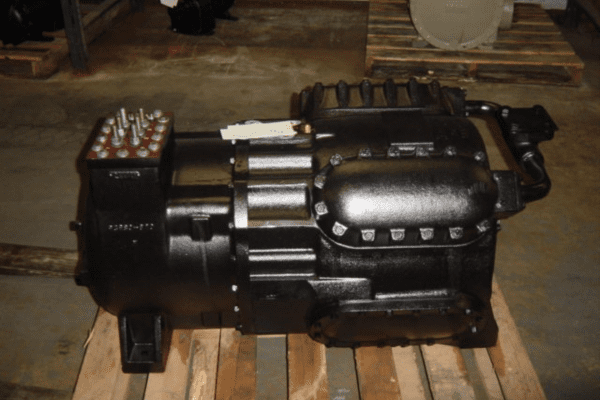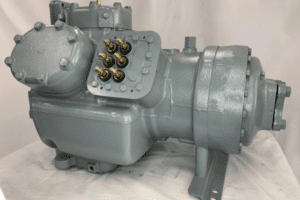When you are planning the replacement of a commercial compressor, it’s important to do your research.
The choice of commercial compressor affects every element of your refrigeration or HVAC system. It is the central component that can bring the entire system to a halt in the event of failure.
Any engineer knows it is vital to take care with points of fault. So, your compressor purchase is one of the most consequential you will make in any building system that requires it. Representing as much as 40% of the total system costs due to their energy draw, compressors determine the value range of the entire setup.
York brand commercial compressors are some of the world’s best.
Although they are sometimes overlooked in favor of high profile brands such as Carrier and Trane, York compressors should not be underestimated. York is especially well known for its commercial HVAC solutions. In addition to its variety of compressors, it also offers industry-leading indoor air quality equipment.
Many facility managers are prioritizing compressor replacement to finalize HVAC maintenance before their buildings return to full capacity. A York replacement compressor is a terrific way to ensure the effectiveness of your commercial HVAC system for years to come.
When choosing a replacement York compressor, many decisions come down to two options: The York JS series or the York JG series. York JS compressor models had a place as trusted workhorses for many years. However, many enterprises are now making room for the newer technology of the York JG compressor. There are other York compressor versions including JK, JL, JM and the most recent all encompassing model is the York PA series.
Here’s what to know before you make your own selection.
The York JS Compressor Represents a Legacy of High Performance
The York JS compressor series has been around for a long time now. Replacement parts are widely available and maintenance routines are well-known. That makes the York JS compressor generally easy to work with. It is not hard to find an affordable replacement York JS compressor if you go with remanufactured compressors.
Low cost of acquisition for the York JS is offset by some common maintenance concerns.
The York JS compressor has benefited from periodic updates such as the new module safeties and the shift from cast iron to aluminum parts. That said, much of the original design remains intact. Older York JS compressors are limited by their first generation style of loading and unloading, which can be a headache for maintenance personnel.
This relies on oil pressure and a solenoid along with internal parts that facilitate loading and unloading.
If you choose a York JS compressor, be aware of what loading method is in use and how to extend the unit’s life if you are looking at an older one. Diagnosing problems with the loading and unloading mechanisms can be time-consuming, so it is valuable to know the process inside and out.
If you are in a position to invest in a newer model, consider the York JG compressor.
The York JG Compressor Series Benefits from the New Suction Cutoff Design
The York JG compressor is a direct response to some of the biggest gripes about the York JS. York’s engineers went back to the drawing board to redesign the unit from the ground up, starting with loading and unloading.
The result was the introduction of suction cutoff.
In suction cutoff, the compressor unloads when the suction gas is cut off from the port that feeds the cylinders. High pressure gas is passed through the solenoid on top of the aluminum piston to achieve this. As discharge pressure exceeds suction pressure, the piston is forced down onto the suction port to block the gas.
When the unit needs the compressor to load, it cuts off the high pressure gas. The gas bleeds off until suction is able to push the piston back up out of the suction port. Although there were initial issues with short cycling, these were resolved by swapping the original steel unloader piston for an aluminum one.
Thanks to the lighter piston, York suction cutoff now works under any conditions.
All in all, suction cutoff is a much more efficient design and far easier to diagnose. With that in mind, the York JG series is in high demand and the York JS compressor is becoming a rarer sight over the years. While the York JS still has its use cases, it is a good idea to discuss with an expert whether the York JG meets your needs better.
For York JG quality and reliability at affordable prices, a remanufactured commercial compressor is best.
With a remanufactured compressor, you get a unit with the longevity and performance of an all-new model. It has been completely disassembled, cleaned, re-engineered, and tested to demonstrate it meets the highest standards. No matter if you choose a York JS or JG model, you can source it faster and at a lower cost.












